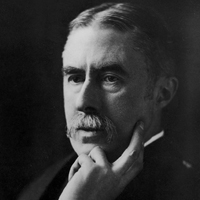Loveliest of Trees by Alfred Edward Housman: Introduction
The speaker in the poem Loveliest of Trees thinks that the cherry is the loveliest among all the trees. Now it is laden with white flowers at the side of the path in the woods. He is now twenty years old and he expects that he will die at the age of seventy.

Alfred Edward Housman
But he feels sorry for the past twenty years. He thinks that the next fifty years is not enough time to enjoy the life here on earth.
The extract beginning of Loveliest of Trees is the second unit of A.E. Housman’s long narrative poem A Shropshire Lad (1896). The long poem is a partly autobiographical and partly romantic poem with the poet’s personal philosophy about nature and human life. The present extract represents the whole poem in many respects. It tells us Housman’s views and it is “romantic” in a special way. The simplicity and odd clues to deeper meanings are also some other features in this extract as well as in the entire poem.
The title 'Loveliest of Trees' is not the title of the section given by the poet himself, but it is a phrase taken from the first line of the second part of the long poem. This section consists of three simple lyrical stanzas. The section is also partly romantic in the sense that it is the expression of the poet’s personal experience and feelings about the nature. It is autobiographical because the poet has used the Shropshire woods as the setting, and he has expressed personal concern about his passing youth and the desire to enjoy the nature. It is philosophical in the sense that it expresses the ideas about the shortness of human youth and life, the ideas that life must be enjoyed whenever we can (Carpe diem theme), and it is also underscored by the possibilities of interpreting the poem as having to do with Housman’s time of the indifference of nature towards human emotions, and the underlying tragic transience of life. A simple paraphrase of the poem does not suggest such deeper meanings, and in fact, we should not forget that at the surface level the poem is about the beauty of nature and the poet’s pleasure in it.
Literary Spotlight
Critical Analysis of Loveliest of Trees
Biography of Alfred Edward Housman
 |
bachelorandmaster.com |